The first thing you’ll be told about Jaffa is that it is one of the oldest ports in the world, but it is much, much more than that. Today, Jaffa is part of a joint municipality with Tel Aviv and the two adjacent cities can be toured together. You can even walk from Tel Aviv, along the seafront promenade, all the way to Jaffa which stands dramatically on a high cliff overlooking the Mediterranean. Pro Tip: On summer nights you’ll find buskers entertaining on the streets of Jaffa.
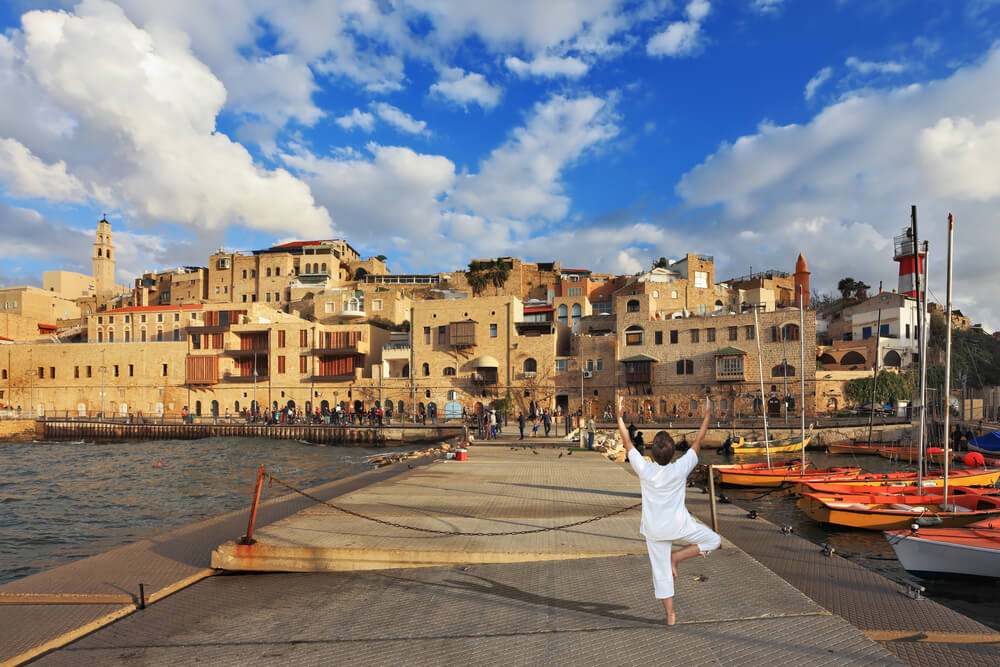 Welcome to the old Jaffa port!
Welcome to the old Jaffa port!
It's home to a unique community of Jews, Christians, and Muslims who coexist harmoniously most of the time. Jaffa is also a foodie heaven, home to the iconic bakery, Abuelafia, the famous Dr. Shakshuka, and trendy Cafe Puaa to name a few.
The port area is loved by artistic souls: There are fascinating galleries, artists’ studios, and antique stores that give the port's surroundings the feel of an artists’ colony.
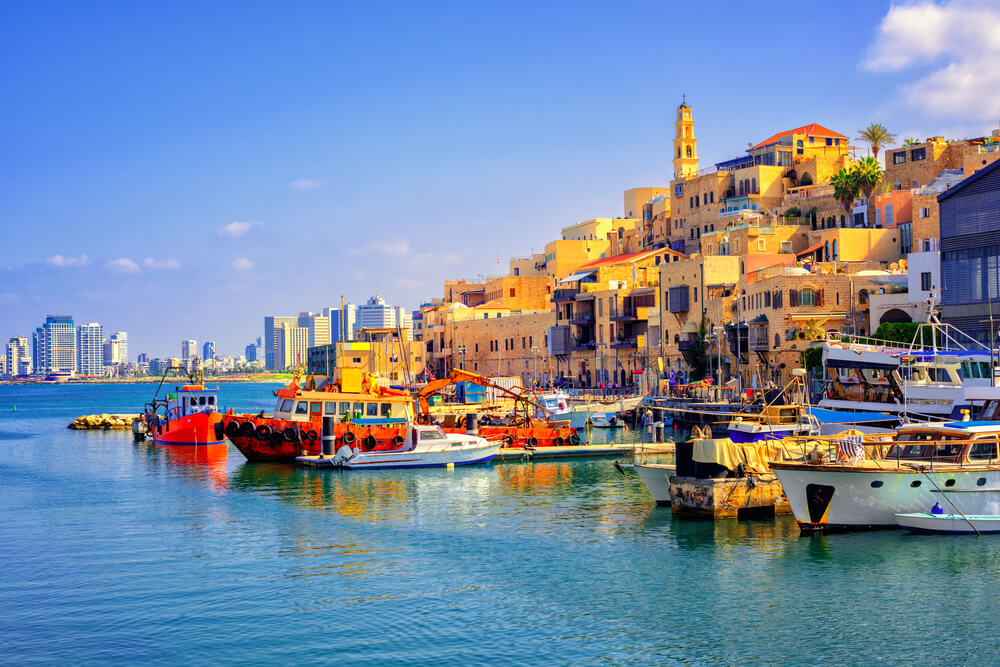 The old Jaffa Port, with the towers of Tel Aviv in the background
The old Jaffa Port, with the towers of Tel Aviv in the background
The old Jaffa port has numerous historical sites from many different eras, and it is simply a beautiful area that might remind you of Jerusalem because of the uniform structures, built with the same white stone.
The port of Jaffa has been in operation since the Canaanite period (about 3300-1200 BC). The city is mentioned in the Bible as “Joppa”, the port where Jonah departed for Tarshish. For thousands of years, it was the primary entrance point to the Holy Land, and pilgrims, armies, immigrants, and merchants docked here.
It is also where St. Peter had his vision and brought Tabatha back to life. The city was conquered by various empires including the Egyptians, Philistines, and Assyrians. It flourished under Roman rule, and in the 7th century AD continued to thrive under Islamic rulers.
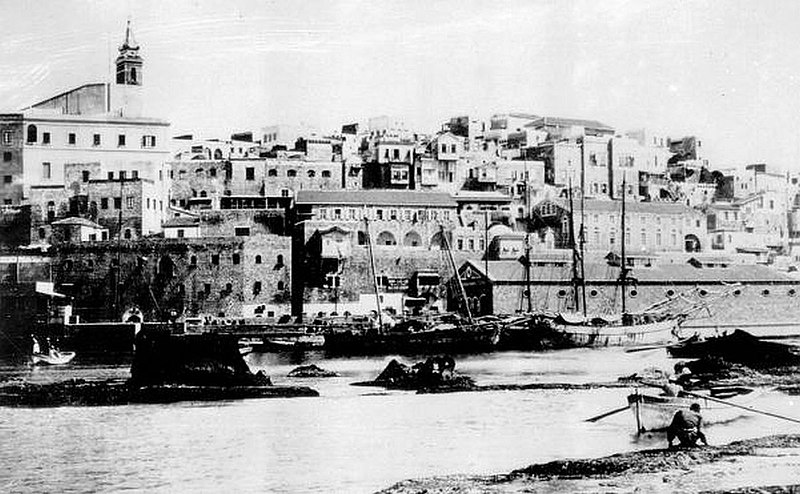 The Jaffa Port in the 19th century
The Jaffa Port in the 19th century
During the Crusader period, the city changed hands from Muslims to Christians, and Richard the Lionheart was captured here in 1191. Then came the Ottomans who remained until the late 19th century. It was in 1799 that Napoleon conquered the city before moving on to be defeated at Acre.
In the late 19th century the city grew exponentially until it was overcrowded and Jews left Jaffa to establish a settlement that grew to be Tel Aviv. Pro Tip: Note that the Jaffa Old Port is not the same as the Old Port of Tel Aviv which is at the other end of the Tel Aviv promenade.
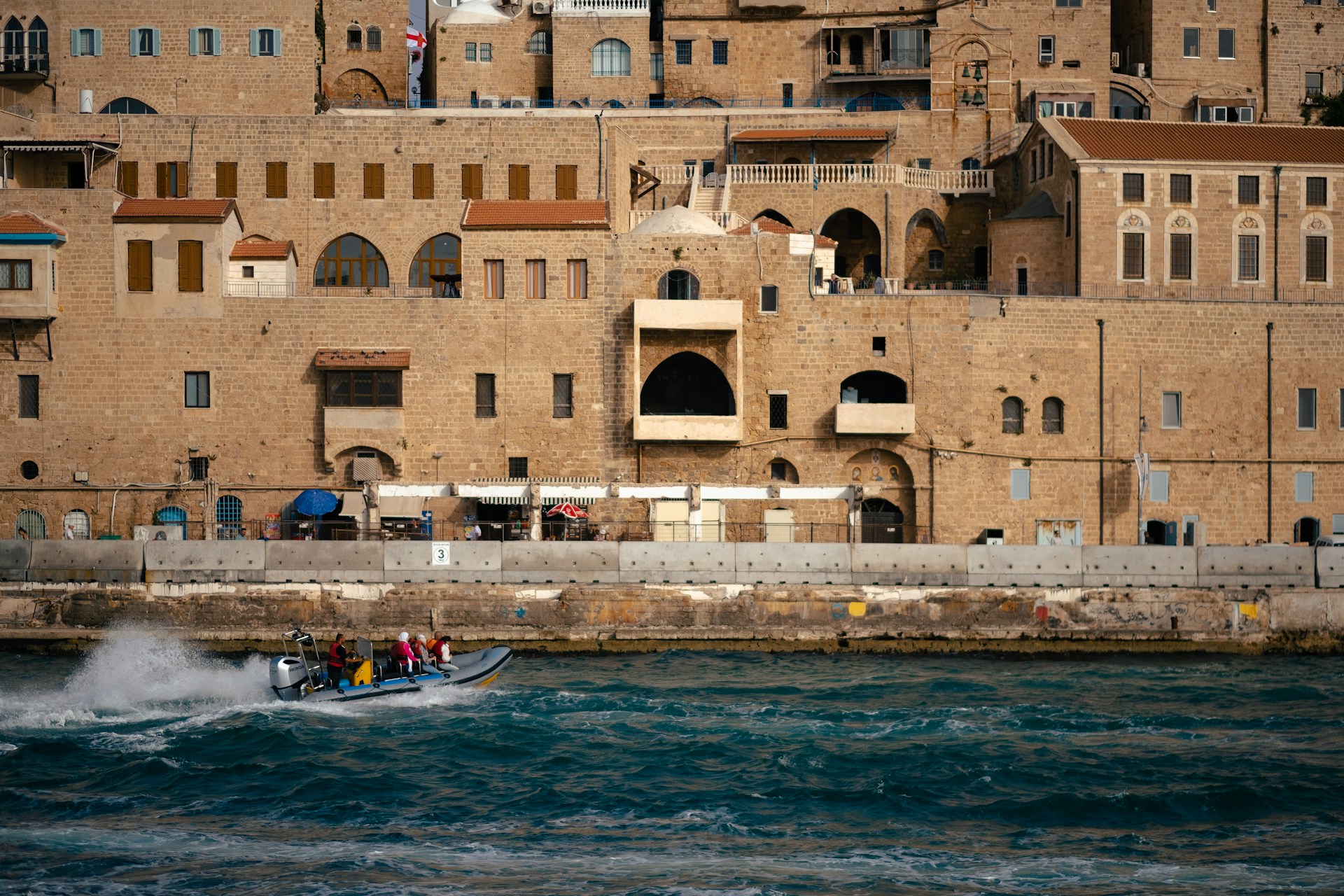 Views of the old Jaffa Port
Views of the old Jaffa Port
In the last decade, Jaffa has undergone a complete makeover to preserve historical landmarks and improve infrastructure and public spaces. It has become a cultural, commercial, and tourist hub with loads of attractions and points of interest.
Old Jaffa Visitors Center
This should be your first stop on a visit to Jaffa. At the Visitors’ Center on Kedumim Square, you can pick up a map, and get information about any special events. If you choose you can also pay to enter Jaffa Tales, which is an archaeological site underneath the main square, and reached via the Visitor Center. The site is brought to life with multimedia to teach about 4000 years of Jaffa’s history.
St. Peter’s Church
This large church and monastery date back to 1654 and has been rebuilt several times since then. The structure we see today was constructed in 1894 and paid for by the Spanish Empire, hence the Spanish architecture and the stained glass windows depicting Spanish saints.
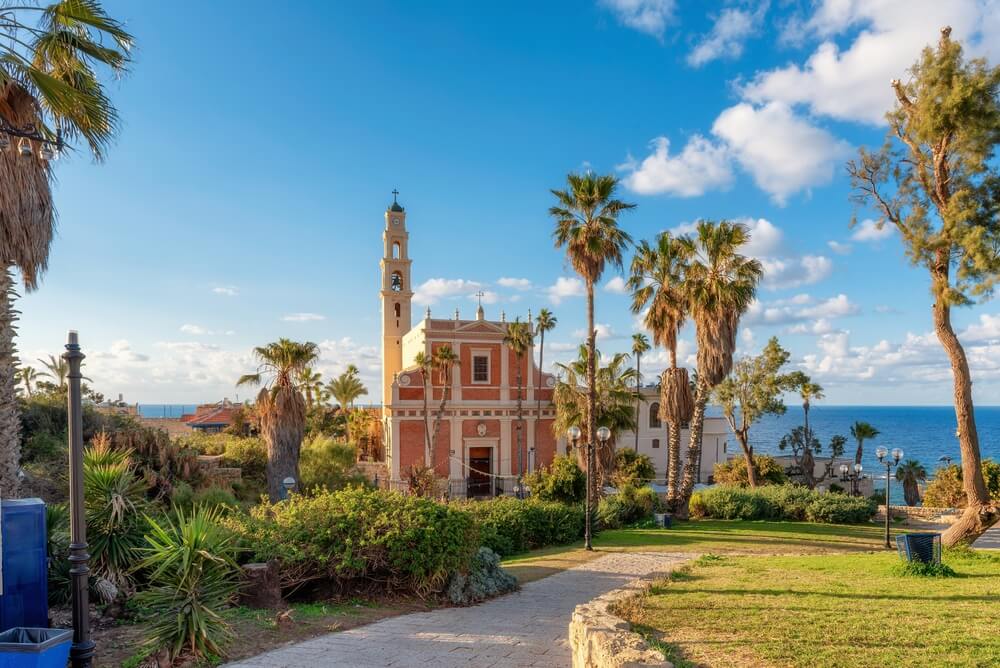 The beautiful St. Peter's Church in Jaffa
The beautiful St. Peter's Church in Jaffa
It is dedicated to Saint Peter who spent time in Jaffa. There are regular services held in several languages and tourists can visit the church Monday - Friday 8:00 - 11:45 and 15:00 - 17:00; Saturday 9:00 - 11:45 and 15:00 - 18:30 plus Sunday 9:00 - 11:45 and 15:00 - 19:00. ProTip: On the church grounds are the remains of an earlier structure where Napoleon spent the night.
Nalaga’at Center
Just a few steps from the Jaffa harbor is a historic building that holds a very special theater and restaurant. The center, “Nalaga’at” or “Please Touch” is a non-profit arts and cultural center, for the deaf and blind.
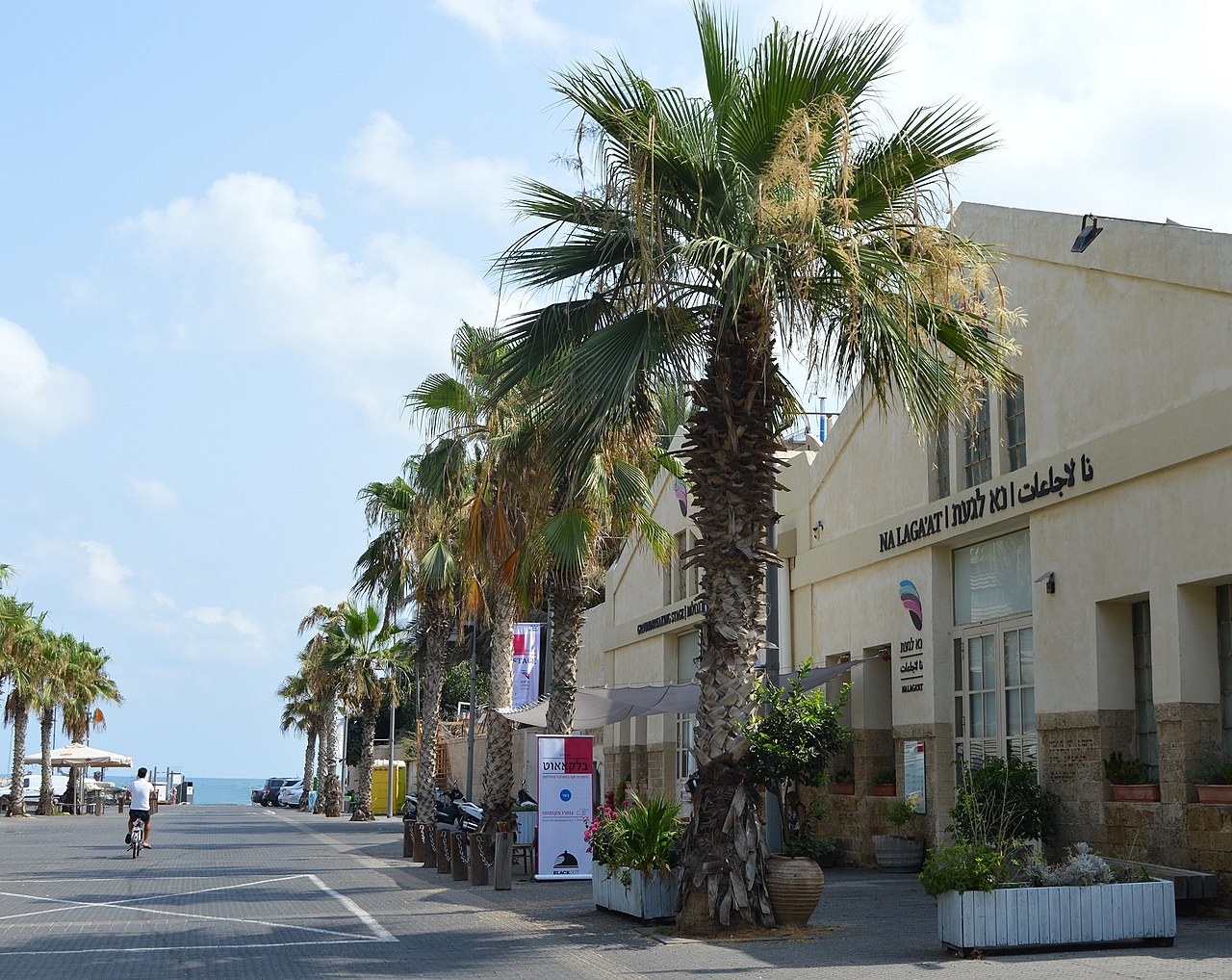 Nalaga’at Center in Jaffa (Image source: Yonatan Meital CC BY-SA 4.0)
Nalaga’at Center in Jaffa (Image source: Yonatan Meital CC BY-SA 4.0)
The visually and hearing-challenged team performs in the theater and serves the food in the restaurant where you can have a “dine in the dark” experience. Pro Tip: You can visit even if there isn’t a performance on. Pop in to learn more about the center, and enjoy a coffee in the cafe.
Jaffa Flea Market
This market is unlike any other market in the country. Although it has been gentrified, it is still authentic and a little rough around the edges. Call it disheveled or just full of character, here you’ll find stores and stands spread across several streets south of the clock tower. The stalls sell everything you can imagine, including the kitchen sink. The carpet stalls lay their rugs, and carpets on the sidewalk, antique stores place statues at their doors, and furniture stores use the road to display tables, chairs, beds, and more.
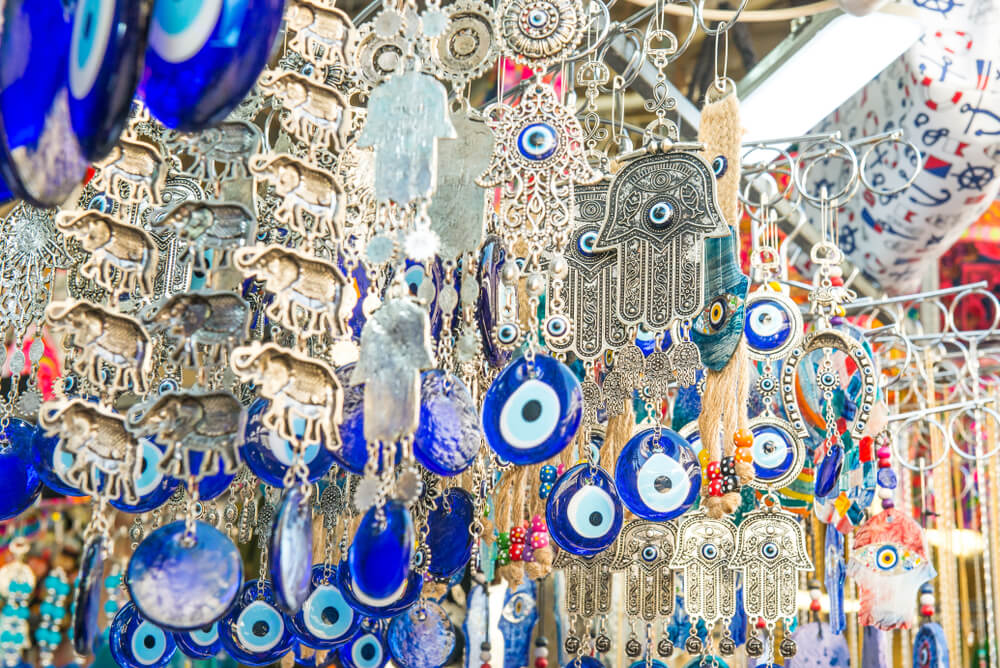 Don't miss the best market in Jaffa!
Don't miss the best market in Jaffa!
In the covered alleys there are piles of second-hand jeans, old and new jewelry, household items, cheap clothing, electronics, toys, musical instruments, spices, nuts, vintage items, and more. At Jaffa Flea Market you’ll find both genuine and fake goods, junk, and treasures. The market has also become a popular hangout after dark when bars and restaurants open up. Pro Tip: All the market stalls and stores are closed on Saturday but cafes, restaurants, and bars are open. On Thursdays, the market stays open late, and there is often public entertainment in the summer evenings.
HaPisgah Gardens
This is a green space on the hilltop overlooking the sea and the Tel Aviv seafront. It connects with other gardens including HaHammam Garden, HaMuze’on Garden, Abrasha Park, and Sha’ar Ra’amses Garden. You can explore all of these gardens as they connect seamlessly.
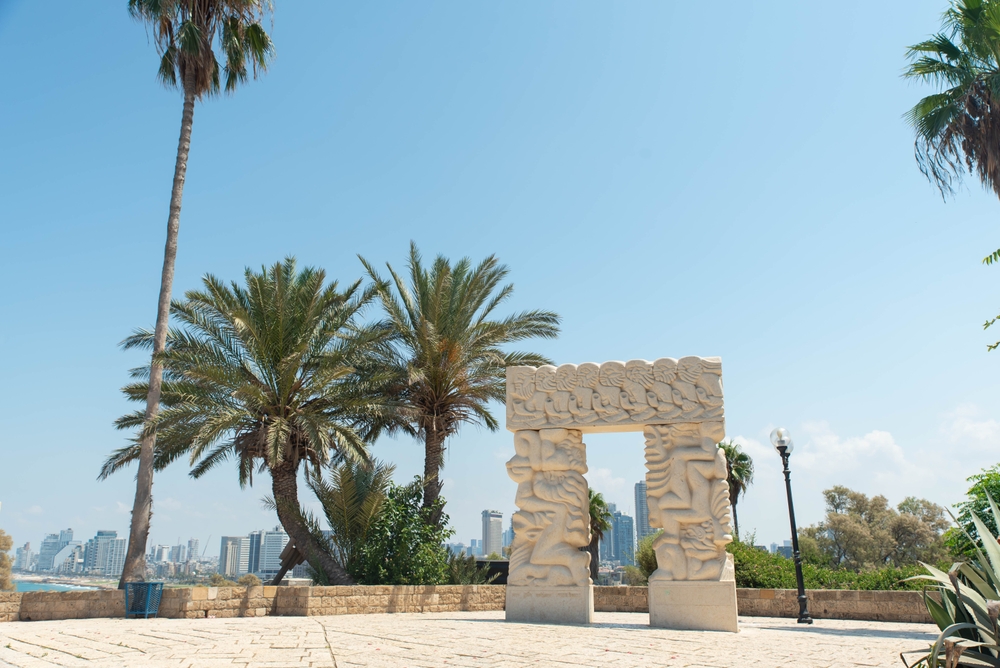 The replica of the Ancient Egyptian Ramses II gate at HaPisga Gardens
The replica of the Ancient Egyptian Ramses II gate at HaPisga Gardens
See the replica of the Ancient Egyptian Ramses II gate, make a wish on the Wishing Bridge, and the neo-Mayan sculpture depicting the fall of Jericho, Jacob’s dream, and the binding of Isaac. Pro Tip: Every Saturday in July and August there is free entertainment at HaPisgah Gardens’ amphitheater.
Ilana Goor Museum
Housed in an 18th-century building at 4 Mazal Dagim St south of Kedumim Square, this museum exhibits work by local artist Ilana Goor.
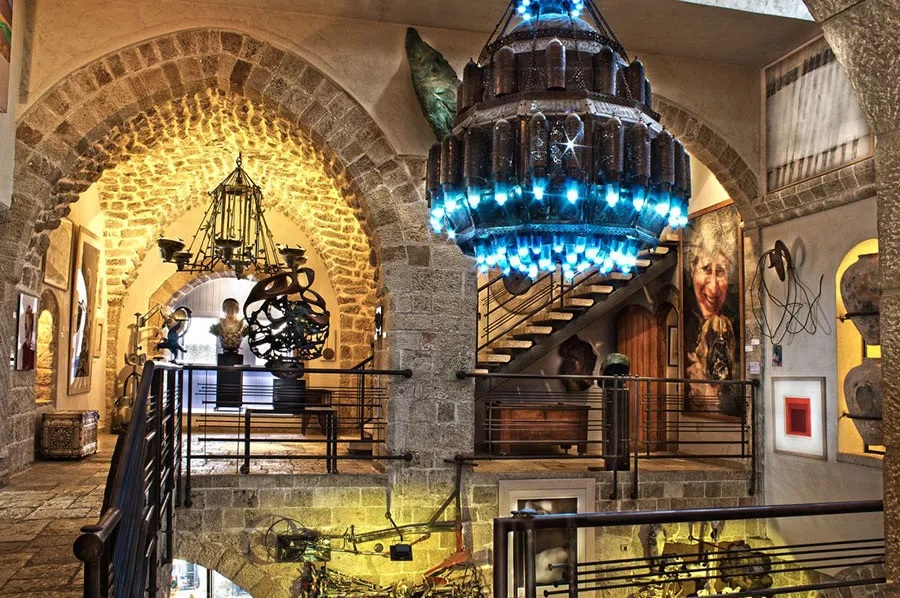 The Ilana Goor Museum (Image source: The official Ilana Goor Museum website)
The Ilana Goor Museum (Image source: The official Ilana Goor Museum website)
The collection is inspired by tribal art, but even if it is not to your taste, it is worth visiting just to see the magnificent building’s interior. Pro Tip: Go up to the terrace for panoramic views and great photo ops. If you’re interested in art then there are other galleries to visit in Jaffa, including the Har-El Gallery; the Gordon Gallery, Zakid Gallery, and the excellent Farkash Gallery.
Mahmoudiya Mosque
This mosque consists of buildings arranged around three courtyards. The various parts of the structure were built at different periods through the 18th and 19th centuries when the city was under Ottoman rule.
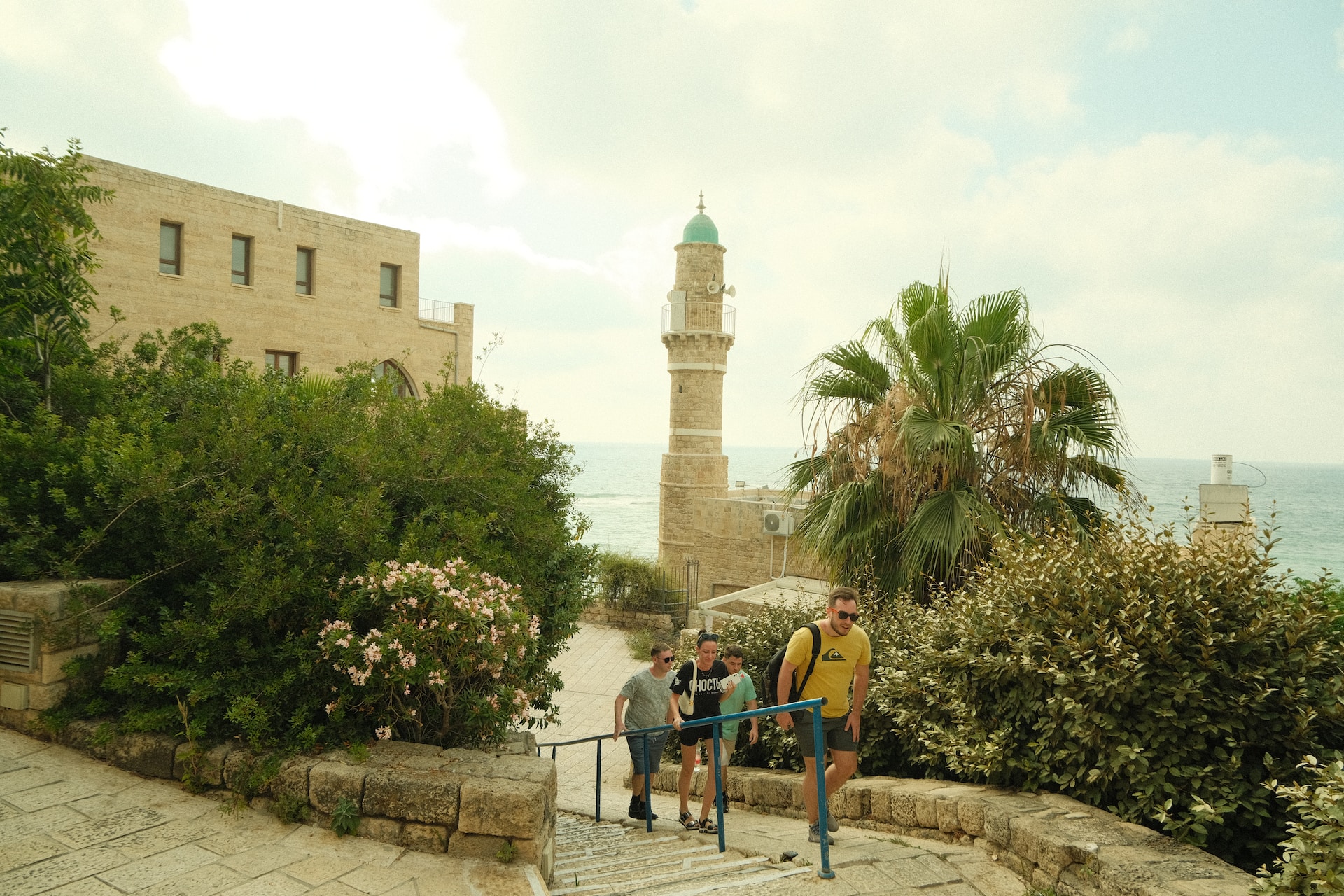 Visitors near the Mahmoudiya Mosque
Visitors near the Mahmoudiya Mosque
Without entering the mosque you can see the tall thin minaret and a beautiful sabil or fountain embedded in the southern wall that faces the street. See the magnificent Islamic architecture
Clock Tower
The first thing you’ll see as you drive into Jaffa along Yefet Street is the Clock Tower which stands on a traffic island on the main road.
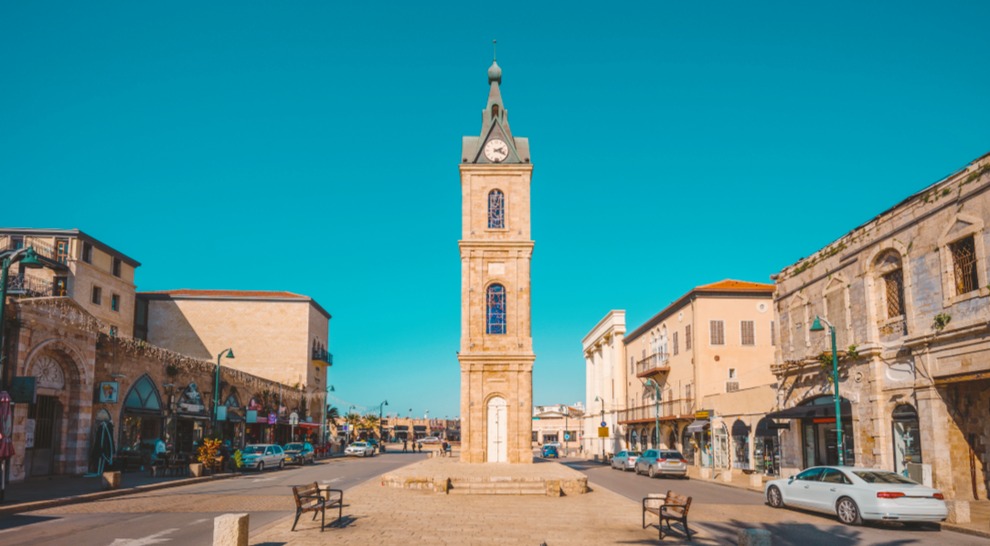 The famous Jaffa Clock Tower
The famous Jaffa Clock Tower
It is 25 meters tall and built from Jerusalem stone. The clock tower was constructed during the Ottoman era, to commemorate the silver jubilee of the reigning Ottoman sultan.
Andromeda’s Rock
Legend has it that the cluster of black rocks just off the shore of Jaffa are the rocks mentioned in the Greek myth of Andromeda. According to the myth, King Cepheus’s wife Queen Cassiopeia boasted that their daughter Andromeda was more beautiful than any mermaid. Hearing this the mermaids appealed to Poseidon to punish the vain humans. Poseidon sent a sea monster and a deluge of water to destroy the city, so King Cepheus decided to sacrifice his daughter to save the city. Andromeda was tied to the famous rocks off the shore of Jaffa and left for the sea monster. Luckily, Perseus rescued Andromeda by fighting the monster, the monster fell into the sea and turned into black rocks.
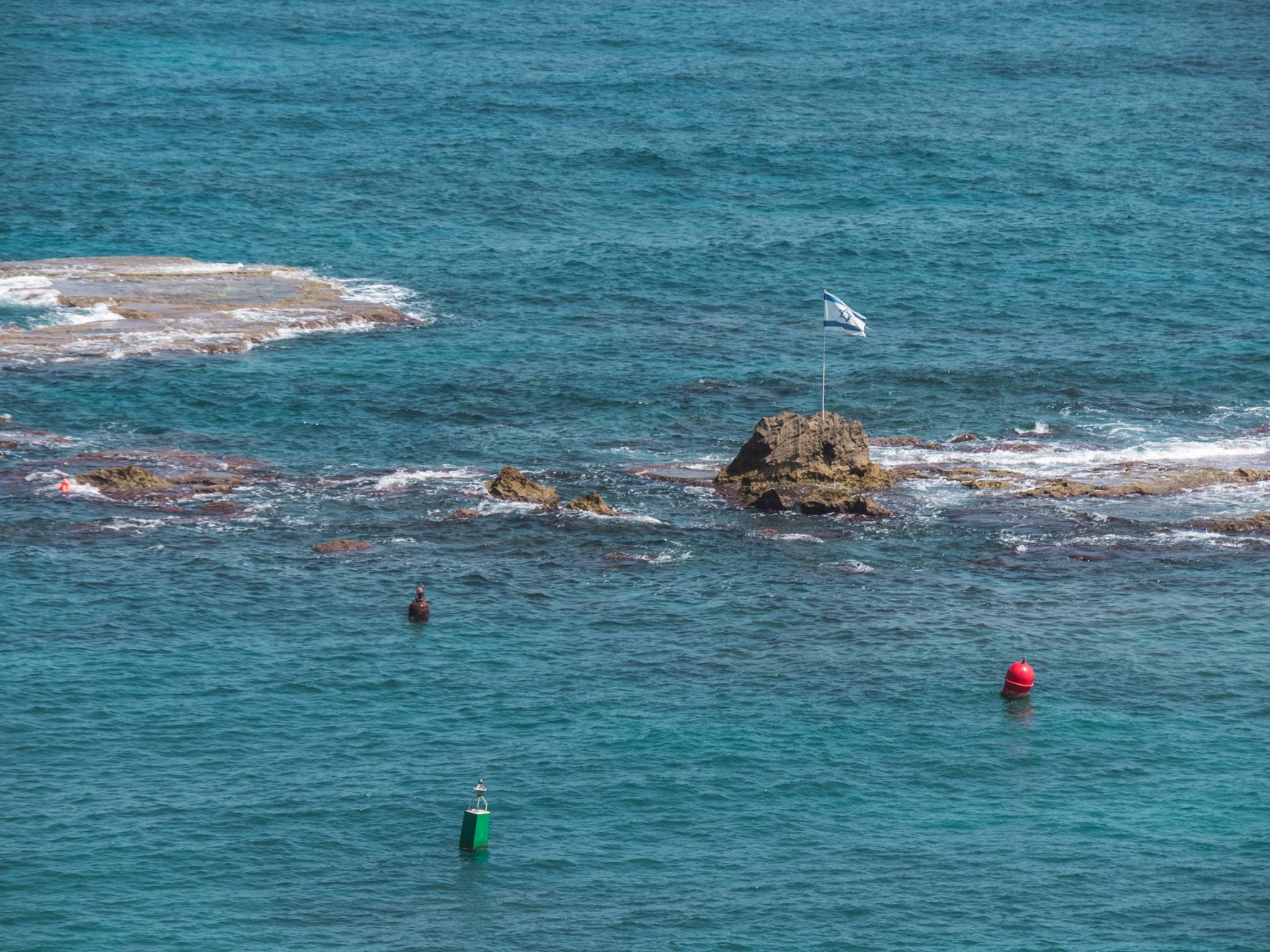 Andromeda's Rock. (Image source: Dmitry Mishin)
Andromeda's Rock. (Image source: Dmitry Mishin)
Jaffa Port lies at the southern end of Tel Aviv’s beachfront promenade; it is one of the oldest ports in the world. For over 3,000 years the port has served the Holy Land as a fishing port and welcomed merchants, pilgrims, travelers, conquerors, and immigrants. Jaffa Port has been completely restored and preserved; it is now a picturesque historic area with ancient stone lanes leading down to the water’s edge. Jaffa Port is home to restaurants, cafes, art galleries, and stores that inhabit the restored warehouses and port buildings.
Tours You May Like